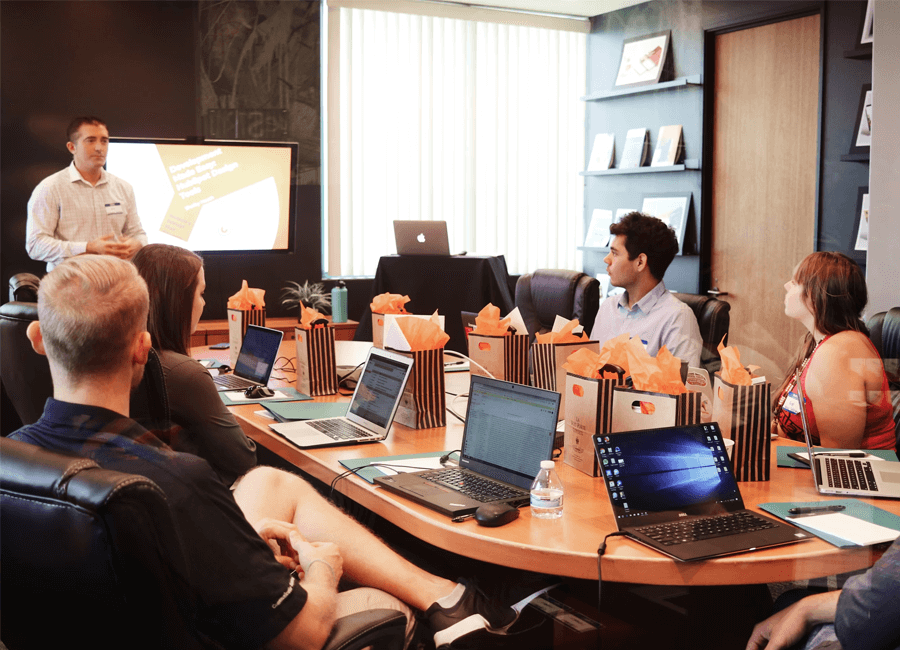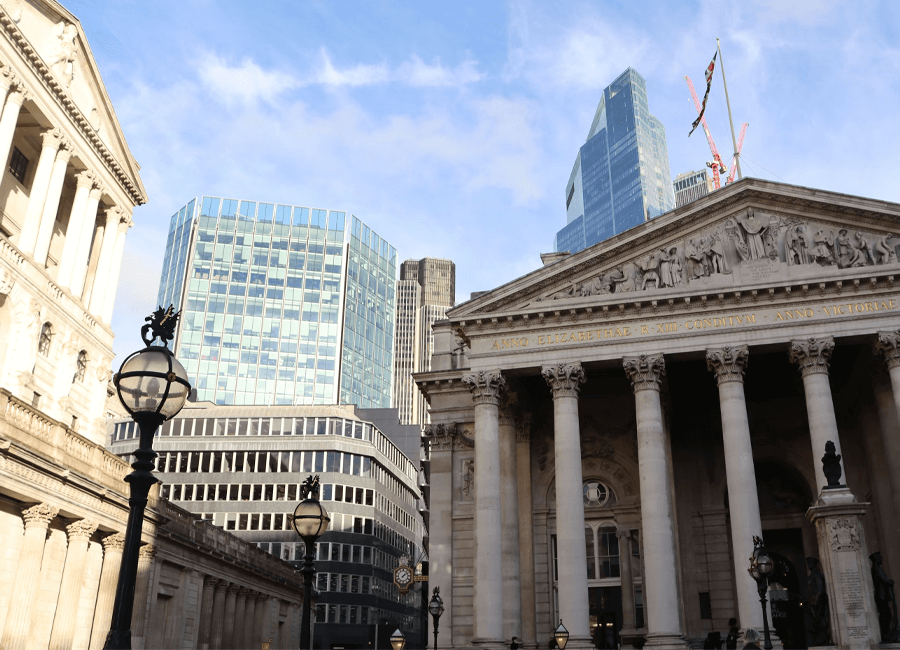Building a customer-centric culture is a tricky task for any business. While newer businesses theoretically would have an easier time changing their strategies to build more customer-centric tactics into them, customer-centricity is still only achievable through trial and error, something that newer brands don’t really have the luxury of doing in case they lose vital business.
For the larger businesses who have been around for a while, they can usually stand to experiment a bit more with their strategies to find which ones work best because their reputation is already built, but these bigger brands have typically been driven by more traditional views, corporate cultures and opinions, and as such any new innovative ideas have a tough time taking hold. So what can brands do to help build a successful customer-centric culture?
This was the key topic of discussion in our latest roundtable. On 3rd March 2022, FlexMR’s Research Director, Maria Twigge, hosted the firm’s first roundtable of the year, which was attended by 7 insight experts from across a wide range of industries:
- Lisa Hulme-Vickerstaff, Head of Customer Research & Insight at Lowell Group
- Alison Dalrymple, Owner of Goodform
- Sandeep Klare, Insights Manager at Paragon Bank Group
- Leanne Galbally, Customer Insight Executive at Paragon Bank Group
- Aidan Crehan, Research Officer at the NRLA (National Residential Landlords Association)
- Katharine Johnson, Client Success Manager at FlexMR
- Chris Martin, Chief Marketing Officer at FlexMR
We would like to send a big thank you to everyone who attended this roundtable event. Each attendee had some valuable experience and insight to share on the topic of building a successful customer-centric culture, and hopefully, everyone took away new ideas to encourage the integration of more customer-centric measures into their organisational strategies.
What Kind of Customer Are You?
Maria started off the discussion by asking the attendees, what kind of customers do they think they are? This is a very poignant question, because stakeholders, insight teams, and really anyone working behind the scenes in an organisation can’t really understand what their customers are going through unless they go through it themselves. It’s good to remind ourselves sometimes about what type of customer we are or would like to be, and the fact that there isn’t much that separates us from them other than what side of the equation we’re currently working on.
So, we asked our attendees to imagine how they think they would react when given less than adequate service at a restaurant.
To give an example, Maria started off by saying that she tends to not share the experience with the staff, she will just pay the bill and just not come back because she hasn’t had the experience she was looking for. This was a sentiment that was echoed by a couple of the other attendees, but the others stated that they would tend to take a more direct route and try to resolve the issue.
| Tweet This | |
| What kind of customer are you? Asking this question helps stakeholder teams put themselves in the shoes of their customers and understand the importance of a good customer experience. |
For one attendee, they have previous experience of working in customer service before coming to market research and know a lot about what to expect during a customer experience, so when they don’t get the customer experience they expect then they will let someone know. They argued that it’s so important to tell a representative of the brand what happened because if you don’t tell someone about the experience you’ve had then how can they ever improve?
The other comments on the topic were a variation of, say something but apologise for the whole way through; expect them to rectify it but apologise for any inconvenience have caused; or pay and leave, but then try to explain later on what happened.
Everyone agreed that while they would react like that in a restaurant, each real-life experience has been unique and it all depends on how much time they want to commit to making a complaint. Sometimes it is easier for yourself to just let it go. But then there are other factors that go into that decision-making process too, such as how much do you like the brand or business? Is it somewhere you want to keep frequenting? What history does the brand have when responding to complaints? What channels will you have to go through to raise the complaint?
So the question then becomes, when is it worth raising an issue as a customer?
The consensus our attendees came to is that if it’s somewhere the customer wants to keep going back to then it would pay off in the long run tell them about the bad customer experience, and then see how they change.
There are multiple channels that customers could go through when raising an issue with the customer experience; everyone can go online and say what they think about a brand, and now there is customer experience feedback everywhere. How are brands meant to cover all bases? The power a customer has now has changed since the internet expanded.
One attendee mentioned how much public social media channels can get a response from a brand, with social media teams now well-versed in answering queries and the risk of bad publicity spurring them to respond quickly to bad customer reviews. But on the other side of the coin, brands are usually seen to be on the defensive straight off the bat, so is this the best channel to use?
Another comment that sparked some thought was, once the initial complaint is raised, the conversation that follows determines the outcome of the customer’s overall experience. A good response that enacts change will make the customers’ experience a positive one, but a bad response that causes more stress and frustration will drive the customer further away.
But there is a lot of emphasis on developing the customer experience based on all complaints, but brands can’t change direction based on one or two bad reviews; customer-centricity is about higher value, but sometimes brands just have to say it’s not worth it right now, let’s revisit it at a later date. To do that right, it’s important to put the complaints in context so they can get to the root of the issue to solve it rather than simply spend the time on each individual issue.
Understanding the Challenges to Customer-Centricity
When most people think about customer-centricity, they think about businesses delivering those products and services and experiences that customers need on a regular, continuous basis; delivering what the customer feels that they need. But another incredibly helpful definition of customer-centricity isn’t about knowing customers well, but in fact, admitting that we don’t know customers well at all and thus need to rely on customer insights rather than stakeholder hubris. This was the definition that our attendees agreed upon and went with going forward.
One commented that a customer-centric business is just a good business that delivers on product, price, and distribution – creating a seamless, frictionless experience for the customer by way of embedding customer insights into key strategies and using them to inform decision-making processes at all levels.
But our attendees mentioned that sometimes stakeholders don’t understand that there is a significant divide between what stakeholders think and what the customers think. So, insight experts have their job cut out for them when trying to bridge that gap and help stakeholders understand that crucial fact, as well as customer opinions and experiences.
Our attendees outlined a number of challenges that insight teams and stakeholders face when trying to build a customer-centric culture. One of our experts said that the first big challenge for them, even before trying to implement any customer-centric measures, is making sure that stakeholders across the business understand the definition of customer-centricity. Because most of the time those stakeholders will feel like they are being customer-centric, but insight teams are in a prime position to show them that they’re not and then explain why not. So, even before we bring in customers to change things up, getting that definition right with stakeholders is crucial.
The culture within the organisation was identified as another big barrier to customer-centricity. Going back to the point made where newer businesses should theoretically have an easier time becoming customer-centric over the larger more traditional organisations, that has a lot to do with the culture and how firmly embedded that culture is within the business. The larger organisations are typically slightly more resistant to change, especially a change so big as changing the culture to be more customer-centric.
In the larger brands, because stakeholders feel like achieving true customer-centricity within their organisation is not possible, they fear the risk that comes with this change and sometimes turn defensive; the insights team are in charge of changing approach to reduce the amount of fear within the organisation to create a culture that accepts change instead of rebelling against it.
Another part of the culture that our attendees identified as a challenge, was that the non-customer-facing teams usually don’t realise the impact they have over the customer experience through their day to day tasks. These stakeholders and teams do make a huge difference but would benefit greatly from having that exposure to customer feedback, even just observing a focus group or survey that shows their impact.
It was said by a few of our insight experts that these teams do actually want to make a difference and improve the services, processes and policies that make up the customer experience from their side, but most of them aren’t given the chance. By giving them access to insights and helping them understand their power, we are giving them permission to be creative and more forward-thinking when striving to make a difference.
| Tweet This | |
| From stakeholder hubris to team silos, there are a number of challenges stakeholders and insight teams need to overcome when embedding customer-centricity into the corporate culture. |
But when it comes to communicating with customers directly and embedding those insights into key strategies, stakeholders can be terrified about what they’re going to hear. One attendee mentioned that they have experience in this, that sometimes stakeholders don’t like hearing that their opinion on what the customers want is wrong, and this avoidance of insights creates a perception gap perpetuated by that fear.
When working to bridge that gap, insight teams need large-scale solutions such as unifying the entire organisation through a common language so communication is easier and brings about instant understanding across the entire business. This is a lengthy process that involves correcting people whenever the old system is used, but it will be worth it when the new language contributes to a better understanding of the power of customer insights.
Another solution is conducting customer interaction sessions; one experience, in particular, was mentioned as an example in this discussion, where people from around their business listen to one customer service call on a regular basis that showcases examples of how customer-centricity is being missed; a conversation with a customer who had a complaint and the customer service representative goes straight to compensating them for that experience without listening to what the customer was actually saying – the customer just wanted the query looked at and resolved, money or reimbursement wasn’t even a factor. There needs to be an emphasis on evaluative questions: ask what did the customer want in the first place? And has that goal been met?
This is a big issue when transitioning into a customer-centric organisation. Senior stakeholders are especially guilty of thinking they know what customers want and ‘understanding’ their audience without consulting customer insights, so insight teams have the job of unpicking that understanding carefully and slowly in order to show them the perception gap between stakeholders and customers, as well as why that perception gap has occurred. Even when the unifying language is put into place, there is still the challenge of stakeholders using buzzwords to make it seem like they know what they’re doing, but saying customer-centric things and doing customer-centric things are very different.
A solution to the challenge of motivating stakeholders is one that has been mentioned a couple of times in the last few roundtable events; one crucial motivation for stakeholder action is pointing out what’s going to happen if they don’t do something and act on vital customer feedback. With every action and decision made, there are impacts to show for it, so when these impacts make themselves known insight teams can harness them as examples of how to become customer-centric or how to better understand what customer-centric actions actually look like. We can create powerful case studies to showcase how work and insights have improved situations across the business to try and encourage stakeholders to move more towards customer-centricity.
How Can Insights and Research Teams Drive Customer-Centricity?
After persuading stakeholders about the power of customer-centricity, there is a lot more that needs to be done for true customer-centricity to be put into action. Namely, start generating the insights necessary to create that unique brand and customer experience based on a full understanding of what your customers actually need.
Getting more ongoing continuous insight from audiences and improving the mix across departments was agreed to be a good first step in improving customer-centricity. Because in organisations pursuing this goal they typically have many silos across the organisation to contend with that don’t have that important link with the research department. Each team needs to understand what customers are coming to the website for, what they prioritise, what their values are, and then take those insights to the bosses to challenge their ideas of their customers' needs. But it was agreed by everyone at this event that customer-centricity starts in strategy at the top of the board and then filters down through objectives in the different teams.
Our attendees recognised that each organisation will have different versions of ‘customers’, whether their customers are members, fans, or even part-stakeholders themselves (such as in Building Societies), this will change the dynamic, needs and values of the customers in question. Understanding what type of customers you have is crucial and will influence the amount and types of market research conducted.
To start to change the culture of a business towards more customer-centricity, simple things need to be done, such as asking ‘where is the insight?’ Behind every decision made and action taken. Getting senior managers to buy into that question will dramatically improve the uptake in that simple action, and stakeholders across the business will start to challenge everything by asking for the data and insights to back it up.
Similarly, one attendee said that when teams in their organisation are doing NPD or tackling other business challenges, having a tickbox on any new project proposal or amendment to ask “have you considered the customer, have you thought about research?” and having these simple questions repeated will eventually cement them within the organisation and add value. “Have you consulted the customer experience or insight team?” If not, then that project won’t go through.
With the amount of customer feedback and reviews online, having a dedicated customer experience team to go through these and direct the complaints to each department will help build customer feedback and insights into the conversations that happen on a daily basis within those teams. This way, everyone thinks about the customer and how their role, decisions and actions impact the customer.
| Tweet This | |
| Insights have the power to drive customer-centricity within an organisation, connecting all stakeholder teams to customers on a continuous basis. |
Using different research methods to get the insights we need is vital, but so is generating those insights in a timely manner so that stakeholders can gain the full weight of their power in every decision needed. Time is always going to be a barrier to customer-centric decision-making. If stakeholders need to make a decision quickly they might feel they don’t have time for research, but there are ways of capturing insight in real-time and offering them insightful advice in just a couple of minutes. Offering that agility to speak to customers in a quick turnaround will create a more seamless research experience for stakeholders everywhere.
While insight teams and stakeholders are concentrating rightly on these aspects of customer-centricity, there is one more that our attendees feel should be highlighted, and that is getting to know the customer in more ways than how they interact with a business. While demographic screener surveys are conducted at the start of the research experience, it’s worth going back to customer research participants and asking them to tell us more about them, what else do they like, what is their daily routine, how do they like their eggs in the morning? Take all of that information and keep updating it to get a more well-rounded view of the customer.
This makes it easy for researchers and stakeholders to connect to customers and makes it easier for participants to engage with the research, because who doesn’t like talking about themselves? The business can use this information to offer more targeted and personalised communications and experiences, offering a truly customer-centric customer experience from a truly customer-centric brand.


















